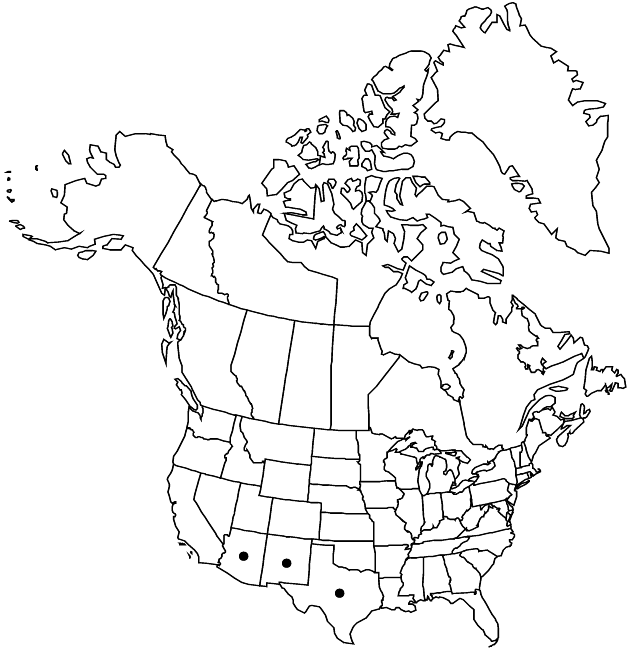Heterotheca fulcrata var. senilis
Brittonia 39: 380. 1987.
Stems moderately hispido-strigose, sparsely to moderately stipitate-glandular. Distal cauline leaf blades ovate to lanceolate, 12–30 × 4–13 mm, margins sometimes ± undulate, with numerous long-hispido-strigose cilia, faces moderately hispido-strigose, moderately stipitate-glandular. Subtending bracts few, size sometimes nearly equaling distal leaves, sometimes much reduced and remote from heads, faces sparsely to moderately hispido-strigose, sparsely to moderately stipitate-glandular. Involucres 7.5–10 mm (averaging 8.5 mm). Phyllaries sparsely strigose, moderately to faces densely stipitate-glandular. Ray floret laminae 9.5–14 mm (averaging 11.6 mm). Cypsela faces sparsely to moderately strigose. 2n = 18, 36.
Phenology: Flowering Jun–Oct.
Habitat: Rocky igneous and limestone soils, silty soils, margins of often seasonally dry streams, pinyon-juniper-oak and oak-pine-fir woodlands
Elevation: 700–2300 m
Distribution

Ariz., N.Mex., Tex., n Mexico.
Discussion
Variety senilis grows in southern New Mexico and trans-Pecos Texas; it is rare in southern Arizona and across northern Mexico. The most hispid form of the species, var. senilis, usually has numerous, spreading, large cilia along much or all of the leaf margins. The leaf margins are sometimes undulate, as in Heterotheca sessiliflora subsp. sessiliflora, and the two could be confused; the ranges do not overlap, however. The variety varies considerably in height and leaf size, and a number of collections are so reduced in size that they are easily mistaken for odd forms of H. villosa var. minor or H. viscida. Plants from southern Arizona often are similar to var. fulcrata. When hair density is high, leaf faces are obscured and the plants appear light grayish green; they could be confused with H. marginata.
Selected References
None.